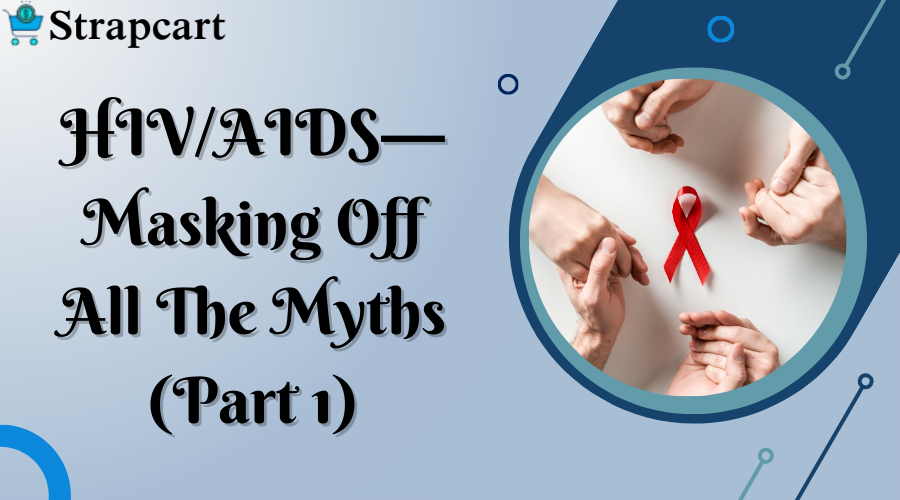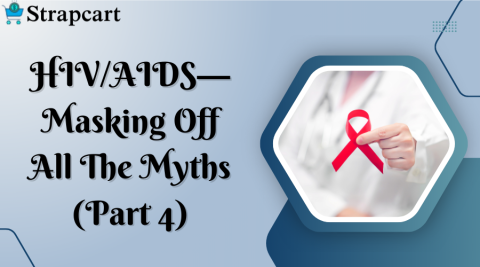“You don’t belong to the civilized society if you respect people who possess HIV/AIDS virus.”
Well, that’s the intensity of the sorry state we encircle around HIV-affected patients.
Prolly, we hate them despite a lack of knowledge relating to the same disease.
If you don’t share a friend’s scooter because he is HIV positive, or you don’t lend your tiffin box to him, you are an equal culprit for promoting an HIV/AIDS-phobic attitude.
So, before you establish unwanted and illogical notions about HIV patients, please skim through these myths.
HIV spreads through social contacts
It has to be one of the most disastrous beliefs coupled with HIV.
HIV can’t leap air, water, food, and social contact; instead, it transfuses to your body only by sexual application with the HIV-affected partner or milking your mouth from the affected breast.
So, whether you are enjoying dinner at KFC, or breathing in the same space dimension with the affected patient; whether you share the same eating utensils to sticking to the same office lavatory; you have zero risks of HIV.
Here’s the best part about these viruses— they don’t get into your body by shaking hands and kissing the partners either.
So, open up with the affected friends and family members, and spend your entirety with extreme normalcy.
If both the couples have HIV, there’s no need to use the protection
You may believe that since you are inching towards death due to HIV, there’s no point in using condoms.
While the idea sounds overwhelming and fascinating, there’s a possibility that you may lay yourself open to the HIV of your partner.
Couldn’t comprehend?
There are two types of HIV/AIDS conditions— HIV 1 and HIV 2.
While you have been on medical observance for HIV 1, sleeping with an HIV 2 virus patient without protection may radicalize your situation and alter the pharmacokinetics of the drug, thereby aggravating your medical condition.
Since the other virus may resist the action of the drug, you may infect yourself to a faster death.
HIV infection— a part of sex workers and not in everyday people
Earlier in the 1980s and 1990s, it was found that sex workers had severe trouble managing their lives— courtesy of HIV.
However, the government throughout the length and breadth of the globe has disseminated awareness regarding safe and precautionary sex.
Yes, people who engage in sexual polygamy and maintain a relationship with multiple-sex partners have a higher risk of developing HIV infection; however, it will be too harsh to associate the profession with the disease.
Any person who indulges in unprotected sex, exchanges blood through careless needling and shaving kit, or feeds on the infected breast fancy their chances of HIV/AIDS infection.
Death is the ultimate destination of HIV
A lot of books and movies have depicted the wrong notion skirting around HIV/AIDS infection, i.e., death is the only destination if you are suffering from the misery of it.
That’s utterly disgusting as it sucks out the courage of the patient, thereby preparing the aura of crematory proceedings.
Yes, you can’t get rid of HIV/AIDS once it steps into your circulatory system; nevertheless, you can control it with special medical assistance— the medicines that inhibit the virus replication by punching down the enzymes that create a favorable environment for them to multiply.
A lot of anecdotes off late prove that a person with HIV can lead a healthy controlled life without having to worry about the fate it may bring to your life.
HIV negative report suggests that you are impervious to HIV
While you have been blooming bonkers over the fact that you are HIV-negative, you may well discover yourself on the receiving end in the coming three months.
The best way to celebrate your HIV/AIDS-negative report is by waiting for another three months.
Although HIV tests are some of the most accurate tests, there’s a bleak possibility that it may turn positive.
Get it tested after three months for validating the fact whether your body didn’t produce antibodies against HIV.
Hold your horses to find interesting myths in the next section.












